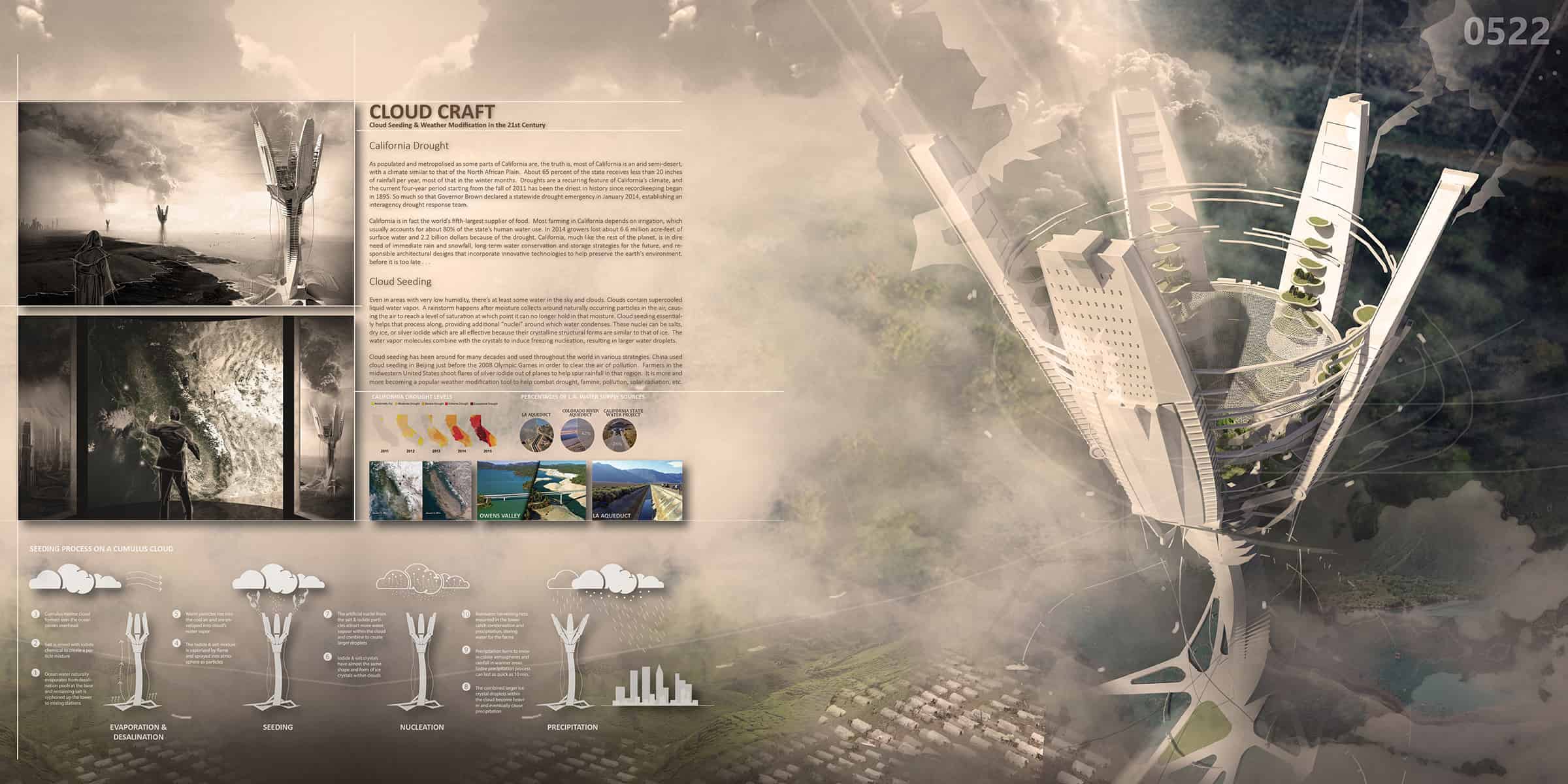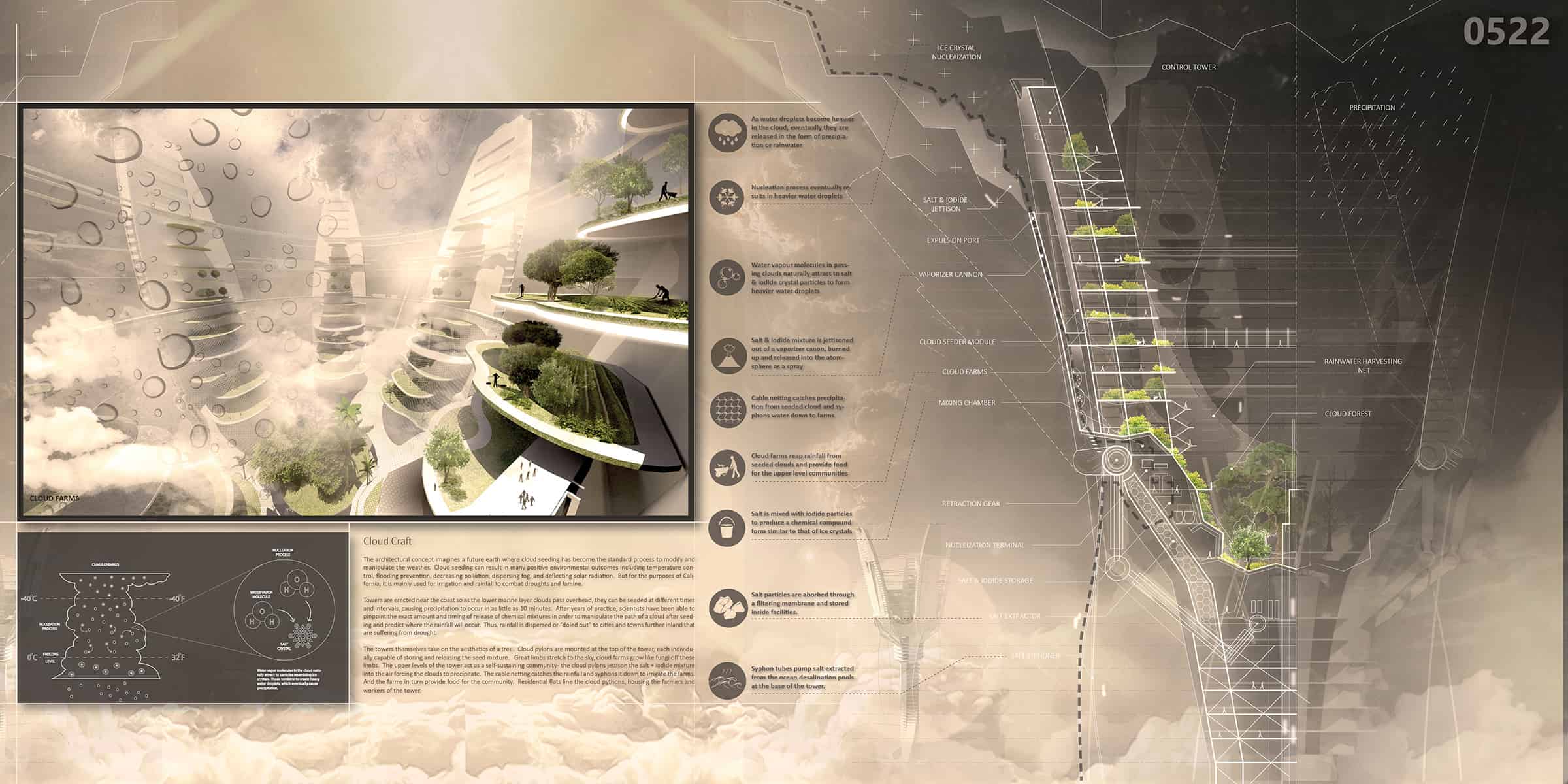Honorable Mention
2016 Skyscraper Competition
Michael Militello, Amar Shah
United States

Droughts are a recurring feature of California’s climate, and the current four-year period starting from the fall of 2011 has been the driest in history since recordkeeping began in 1895. California is in fact the world’s fifth-largest supplier of food and most of the farming depends on irrigation, which usually accounts for about 80% of the state’s human water use. In 2014 growers lost about 6.6 million acre-feet of surface water and 2.2 billion dollars because of the drought.
California, much like the rest of the planet, is in dire need of immediate rain and snowfall; long-term water conservation and storage strategies for the future; and responsible architectural designs that incorporate innovative technologies to help preserve the earth’s environment, before it is too late.
Looking to the sky can be a solution. Cloud seeding has been around for many decades and used throughout the world in various strategies. China used cloud seeding in Beijing just before the 2008 Olympic Games in order to clear the air of pollution. Farmers in the midwestern United States shoot flares of silver iodide out of planes to help spur rainfall in that region. It is more and more becoming a popular weather modification tool to help combat drought, famine, pollution, solar radiation, etc.
Clouds contain super-cooled liquid water vapor. A rainstorm happens after moisture collects around naturally occurring particles in the air, causing the air to reach a level of saturation at which point it can no longer hold in that moisture. The process of cloud seeding essentially provides additional “nuclei” around which water vapor molecules condense in the cloud. These nuclei can be salts, dry ice, or silver iodide, which are all effective because their crystalline structural forms are similar to that of ice. The water vapor molecules combine with the added crystals to induce freezing nucleation, resulting in larger heavier water droplets and eventual precipitation.
The architectural concept imagines a future earth where cloud seeding has become the standard process to modify and manipulate the weather. Cloud seeding can result in many positive environmental outcomes including temperature control, flooding prevention, decreasing pollution, dispersing fog, and deflecting solar radiation. But for the purposes of California, it is mainly used for irrigation and rainfall to combat droughts and famine.
Towers are erected near the coast so as the lower marine layer clouds pass overhead, they can be seeded at different times and intervals, causing precipitation to occur in as little as 10 minutes. After years of practice, scientists have been able to pinpoint the exact amount and timing of release of chemical mixtures in order to manipulate the path of a cloud after seeding and predict where the rainfall will occur. Thus, rainfall is dispersed or “doled out” to cities and towns further inland that are suffering from drought.
The towers themselves take on the aesthetics of a tree. Great limbs stretch to the sky; cloud farms grow like fungi off these limbs. The upper levels of the tower act as a self-sustaining community – the cloud seeders jettison the salt + iodide mixture into the air forcing the clouds to precipitate. The cable netting catches the rainfall and syphons it down to irrigate the farms. And the farms in turn provide food for the community. Residential flats line the cloud pythons, housing the farmers and workers of the tower.


This work is licensed under a Creative Commons License permitting non-commercial sharing with attribution. https://creativecommons.org/licenses/by-nc-nd/4.0/



